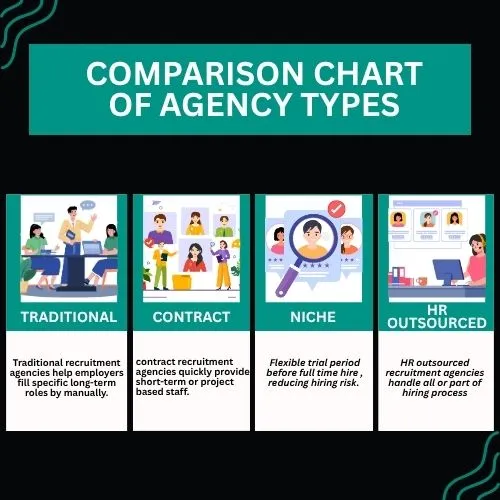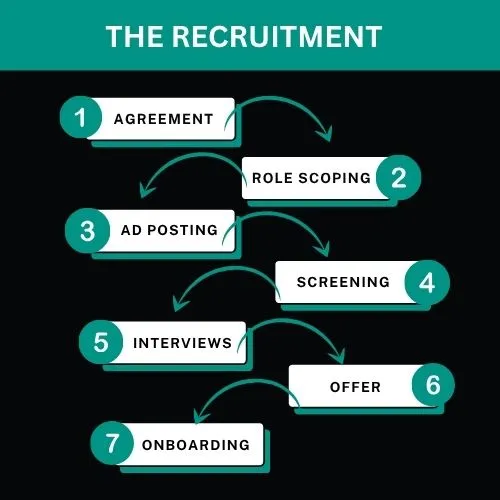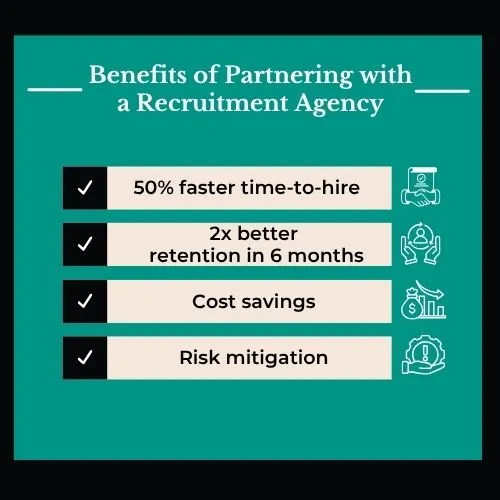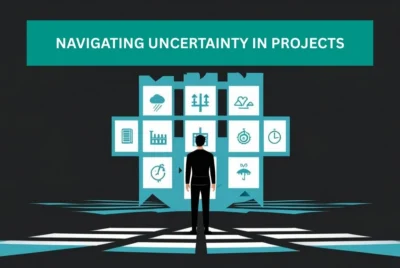Whether you’re a small business, an SME, or a growing multinational, one constant remains: the need for skilled, reliable people. Hiring the right talent can be a time-consuming and resource-intensive process — especially when you’re juggling daily operations. That’s where recruitment agencies come in.
This guide explains how recruitment agencies work, what services they offer, and how partnering with one can help your business hire faster, smarter, and more effectively.
What Is a Recruitment Agency?
A recruitment agency is a specialist business that acts as a bridge between employers and job seekers. These agencies help companies identify, attract, and hire the most suitable candidates for their open roles. In many cases, they also handle the recruitment process from end to end — from crafting job adverts to onboarding new hires.
Types of Recruitment Agencies
Recruitment agencies vary depending on the type of service they offer:
- Traditional Recruitment Agencies: Charge a fee for placing candidates into permanent roles.
- Contract & Temporary Staffing Agencies: Specialise in filling short-term or project-based positions.
- Industry-Specific Agencies: Focus on particular sectors like healthcare, IT, or engineering.
- Outsourced HR Providers: Act as a full-service HR partner, handling everything from hiring to compliance and onboarding.

Why Do Businesses Use Recruitment Agencies?
Businesses turn to recruitment agencies for a range of benefits:
- Access to a wider and more qualified talent pool
- Time and cost savings
- Improved candidate quality and retention
- Reduced hiring risk
- Sector-specific hiring expertise
Step-by-Step: How Recruitment Agencies Work

Step 1: Signing an Agreement
The process begins with a formal agreement between the agency and your business. This contract outlines:
- The type of partnership (one-off or ongoing)
- Roles to be filled
- Hiring timelines
- Fees and payment structure
- Communication expectations
Having these terms in place ensures both sides understand their responsibilities.
Step 2: Understanding Your Business and the Role
Once the agreement is signed, the agency gathers key information about your business — including company culture, team structure, and the specific requirements for the position.
This insight allows them to tailor their search to candidates who are not only qualified but also a cultural fit.
Step 3: Creating and Advertising the Job Post
The agency then creates a compelling job posting that outlines:
- The role and responsibilities
- Required qualifications and experience
- Perks and benefits
- A brief overview of your company
They advertise this role across various platforms such as:
- Job boards
- Their internal database
- Social media
- Company website
Step 4: Screening and Shortlisting Candidates
After collecting applications, the agency screens candidates through:
- CV reviews
- Phone interviews
- Skills and aptitude tests
- Technical assessments (if required)
Their aim is to shortlist only those candidates who meet both the technical and soft skill requirements for the job.
Step 5: Conducting Interviews
The most promising candidates are invited for in-depth interviews, either by the agency or in collaboration with your team. These interviews evaluate:
- Communication and interpersonal skills
- Industry experience
- Problem-solving capabilities
- Cultural alignment
Feedback is collected and shared with your hiring managers.
Step 6: Extending a Job Offer
Once the final candidate is selected, the agency presents them with a formal offer on your behalf. This typically includes:
- A written offer letter
- Salary package
- Role expectations
- Start date
- Additional terms and benefits
The agency can also help with negotiations, ensuring a smooth acceptance process.
Step 7: Onboarding the New Hire
After the candidate accepts the offer, the agency supports onboarding by:
- Preparing documentation
- Coordinating training
- Introducing the new hire to team members
- Assisting with cultural integration
Effective onboarding sets the stage for better engagement and long-term retention.
Benefits of Using Recruitment Agencies
Partnering with a recruitment agency can deliver several strategic advantages:
- Faster Hiring: Reduce time-to-hire by leveraging expert networks and resources.
- Better Candidates: Access pre-vetted, high-quality talent.
- Scalable Support: Ideal for growing teams or project-based hiring.
- Cost-Efficient: Saves on advertising, screening, and internal HR overhead.
- Risk Reduction: Lower the chances of a bad hire, which can be costly in the long run.

When Should You Consider Using a Recruitment Agency?
You might benefit from hiring a recruitment agency if:
- You’re experiencing rapid growth or a high staff turnover
- You need to fill roles quickly or discreetly
- You’re expanding into new geographic regions
- You require niche or specialised skills
- Your internal HR team is overstretched
Final Thoughts
Recruitment agencies can be a game-changer for businesses looking to hire efficiently and effectively. By understanding how they work — from the initial agreement to onboarding — you can make informed decisions and build a strong partnership that fuels your company’s growth.
Need help finding the right talent?
Speak to our recruitment experts today and discover how we can streamline your hiring process.




